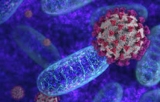
Toxin Assays & Cellular Stress kit
Pathogen and Toxin Assays
- Hepatitis B
Hepatitis B is an infection of the liver caused by the hepatitis B virus. HBV is transmitted by exposure to infectious blood or body fluids (e.g. saliva, semen, urine); forms of transmission include unprotected sexual activity, blood transfusion, mother-to-infant transmission, or consuming contaminated food/water. The acute illness causes liver inflammation, vomiting and jaundice, while chronic HBV infection often leads to liver cirrhosis and cancer. Roughly one third of the world’s population have been infected with hepatitis B virus. 5-10% of adults and 90% of babies who have been infected will have the virus for the rest of their lives. The infection is preventable by vaccination. Diagnosis of chronic Hepatitis B Virus (HBV) infection has long been based on HBV serology and measurement of hepatocytic enzymes. With the development of therapies for chronic HBV infection, including interferon and lamivudine, quantitative detection of HBV (viral antigens and patient antibodies) has been used increasingly as the most important marker for monitoring HBV replication activity, disease progression, and assessing antiviral treatment. Specifically, Hepatitis B "e" antigen (HBeAg) is an important diagnostic marker, generally detectable in patients with acute infection; positive testing indicates high HBV replication in the liver, elevated blood HBV titers and greater infectivity to others. Several assays for the quantitative measurement of HBV DNA have been developed, such as PCR-based nucleic acid amplification assays. However, these methods tend to be cumbersome and expensive. Cell Biolabs’ QuickTiter™ HBeAg ELISA Kit is an enzyme immunoassay developed for detection and quantitation of the Hepatitis B "e" Antigen. The kit has detection sensitivity limit of ~150 pg/mL HBeAg. Each kit provides sufficient reagents to perform up to 96 assays including standard curve and HBeAg samples. Assay Principle An anti-HBeAg monoclonal coating antibody is adsorbed onto a microtiter plate. Hepatitis B "e" antigen present in the sample or standard binds to the antibodies adsorbed on the plate; a FITC-conjugated mouse anti-HBeAg antibody is added and binds to the antigen captured by the first antibody. Following incubation and wash steps, an HRP-conjugated mouse anti-FITC antibody is added and binds to the FITC conjugated anti-HBeAg. Unbound HRP-conjugated mouse anti-FITC antibody is removed during a wash step, and substrate solution reactive with HRP is added to the wells. A colored product is formed in proportion to the amount of HBeAg present in the sample. The reaction is terminated by addition of acid and absorbance is measured at 450 nm. A standard curve is prepared from recombinant HBeAg and sample concentration is then determined.
- Viral Expression
Adeno-associated virus (AAV) belongs to the family of Parvoviridae, a group of viruses among the smallest of single-stranded and non-enveloped DNA viruses. There are eleven different AAV serotypes reported to date. The AAV genome is built of single-stranded deoxyribonucleic acid (ssDNA), either positive- or negative-sensed, which is about 4.7 kilobase long. The genome is made up of inverted terminal repeats (ITRs) at both ends of the DNA strand as well as two open reading frames (ORFs): Cap (Capsid) and Rep (Replication). The Cap coding region contains overlapping nucleotide sequences of the capsid proteins VP1, VP2 and VP3, which interact together to form an icosahedral capsid structure. Introduction On the 5’ end of the genome there are two promoters called p5 and p19, from which two overlapping mRNAs of different length can be produced. Each of the mRNA sequences contains an intron that can be either spliced out or not resulting in four different mRNAs, and therefore four possible Rep proteins. The protein names describe their size in kilodaltons (kDa): Rep78, Rep68, Rep52 and Rep40 (Figure 1). Rep78 and Rep68 bind the hairpin structure of the ITR and cleave the terminal resolution site within the hairpin. These two proteins were also shown to be required for integration of the AAV genome. All four Rep proteins have been shown to contain helicase activity and can bind ATP. These proteins have also been shown to increase transcription from the p40 promoter and decrease transcription from both the p5 and p19 promoters.
Resultados de su búsqueda : 3 Producto encontrado
Refine su búsqueda :
- virus 2
- ELISA/ELISPOT 3
- Colorimetric 3

